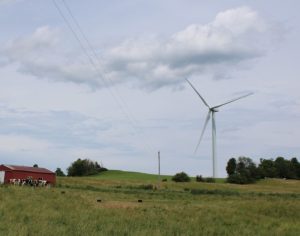SYRACUSE — Bousquet Holstein PLLC attorney Aaron Frishman started learning more about commercial-drone applications during the middle part of 2015. He had heard a presentation from CenterState CEO on its proposal for the Upstate Revitalization Initiative, Gov. Andrew Cuomo’s economic-development contest, and how the proposal partly focused on the testing and development of commercial drones. […]
Get Instant Access to This Article
Become a Central New York Business Journal subscriber and get immediate access to all of our subscriber-only content and much more.
- Critical Central New York business news and analysis updated daily.
- Immediate access to all subscriber-only content on our website.
- Get a year's worth of the Print Edition of The Central New York Business Journal.
- Special Feature Publications such as the Book of Lists and Revitalize Greater Binghamton, Mohawk Valley, and Syracuse Magazines
Click here to purchase a paywall bypass link for this article.
SYRACUSE — Bousquet Holstein PLLC attorney Aaron Frishman started learning more about commercial-drone applications during the middle part of 2015.
He had heard a presentation from CenterState CEO on its proposal for the Upstate Revitalization Initiative, Gov. Andrew Cuomo’s economic-development contest, and how the proposal partly focused on the testing and development of commercial drones.
Drones are more formally referred to as unmanned aerial vehicles, or UAVs.
At first, Frishman was skeptical but started reading more about the topic.
“…learning that … looking at it from a legal perspective that, really, this is a brand new legal field,” he says.
Frishman decided to propose the formation of a UAV/UAS practice group at Bousquet Holstein.
UAS, or unmanned-aircraft systems, another related term, is a common moniker in the industry to describe the “broader interplay” between UAVs and flight-management and safety systems, according to the firm.
Bousquet Holstein conducted market research and couldn’t find any law firms north of New York City that “focused on this area of law.”
“We really felt this would be a good opportunity to be an ancillary service that we could provide both to our current business clients and also for any new businesses that would want to look into this,” Frishman adds.
Syracuse–based Bousquet Holstein on May 11 announced the formation of the practice group, which didn’t involve any new hiring at the firm.
The practice group focuses on the legal issues surrounding the commercial and recreational use of small UAVs.
Besides Frishman, the new practice group includes attorneys Eva Wojtalewski, Philip Bousquet, Natalie Hempson, and Joshua Werbeck.
Both Frishman and Wojtalewski spoke with CNYBJ on June 10.
Over the next several years, the UAV/UAS industry is poised to play a “significant role” in the growth and evolution of commerce not only nationally and globally, but specifically in the Central New York region, the law firm contends.
Bousquet Holstein formed its drones practice group to work alongside clients to help them “successfully navigate the newly developing” legal and regulatory issues while pursuing opportunities for expanded commercial use of drone or UAS technology.
“Clearly, there’s a need, and I think we’ve determined, based on our research, there’s a need for this legal service,” says Wojtalewski.
The Federal Aviation Administration (FAA) is treating commercial applications of UAVs in the same way it would any aircraft, she adds.
Bousquet Holstein’s practice group will work with clients that have FAA registrations; section 333 exemptions; FAA regulatory-compliance matters, risk assessment, and other business and contract-related matters associated with the commercial use of UAVs.
Section 333 of the FAA Modernization and Reform Act of 2012 “grants the Secretary of Transportation the authority to determine whether an airworthiness certificate is required for a UAS to operate safely in the national airspace system (NAS),” according to the FAA website.
“I think what we can do as a firm … is to help navigate the process with the FAA, which can be quite involved,” says Wojtalewski.
Small drones are remote-controlled aircraft, typically weighing about 55 pounds or less, which a pilot can fly from a ground-control station. Pilots can fly the drones “autonomously,” using pre-programmed flight plans or “more complex, dynamic” automation systems, according to Bousquet Holstein.
Contact Reinhardt at ereinhardt@cnybj.com



